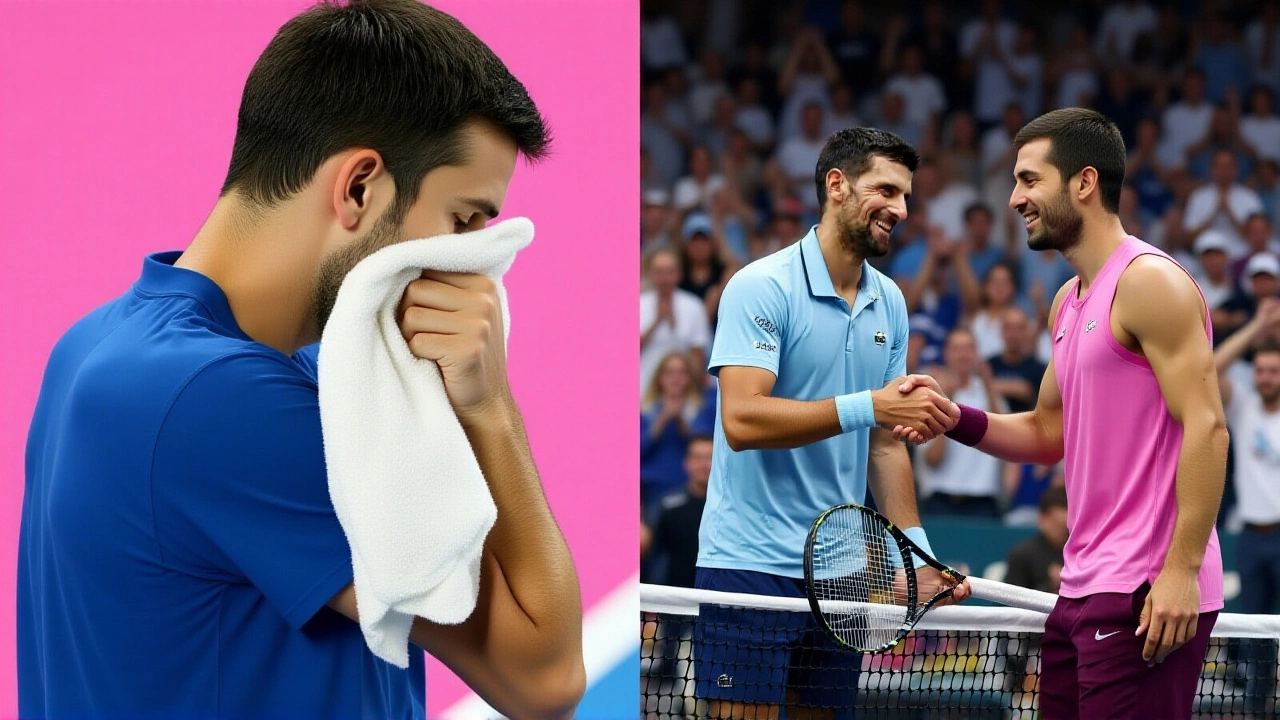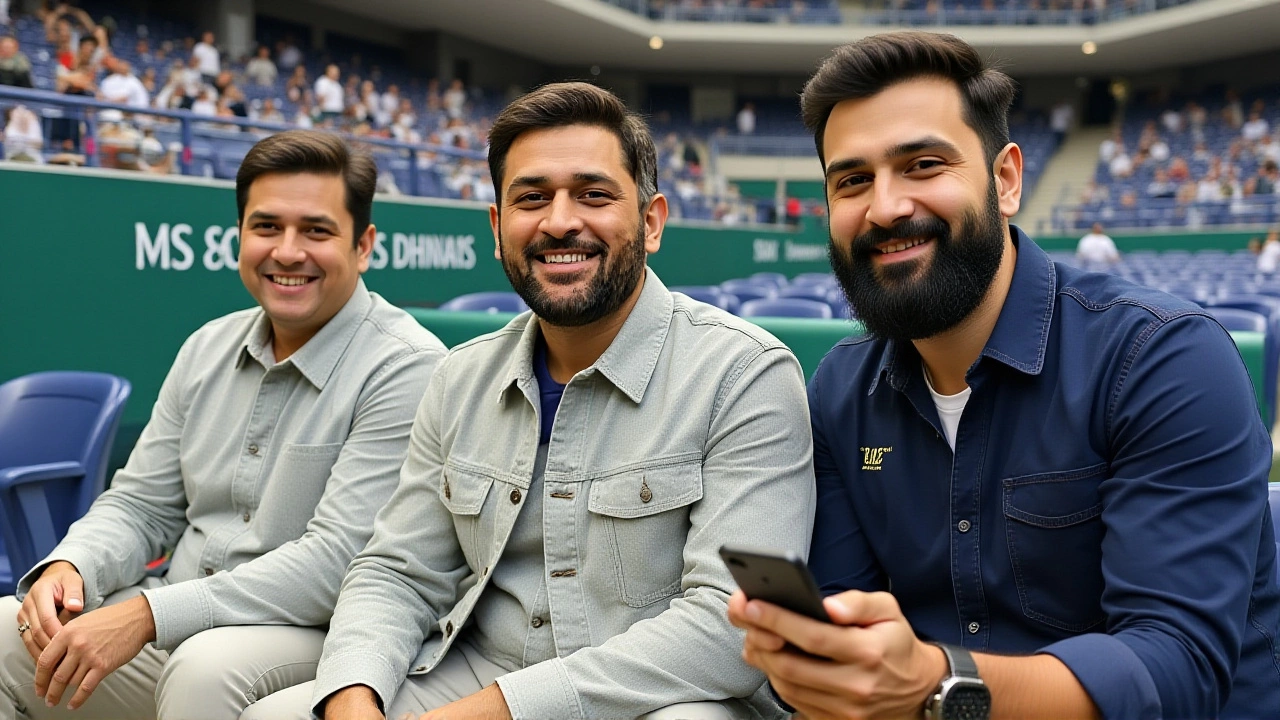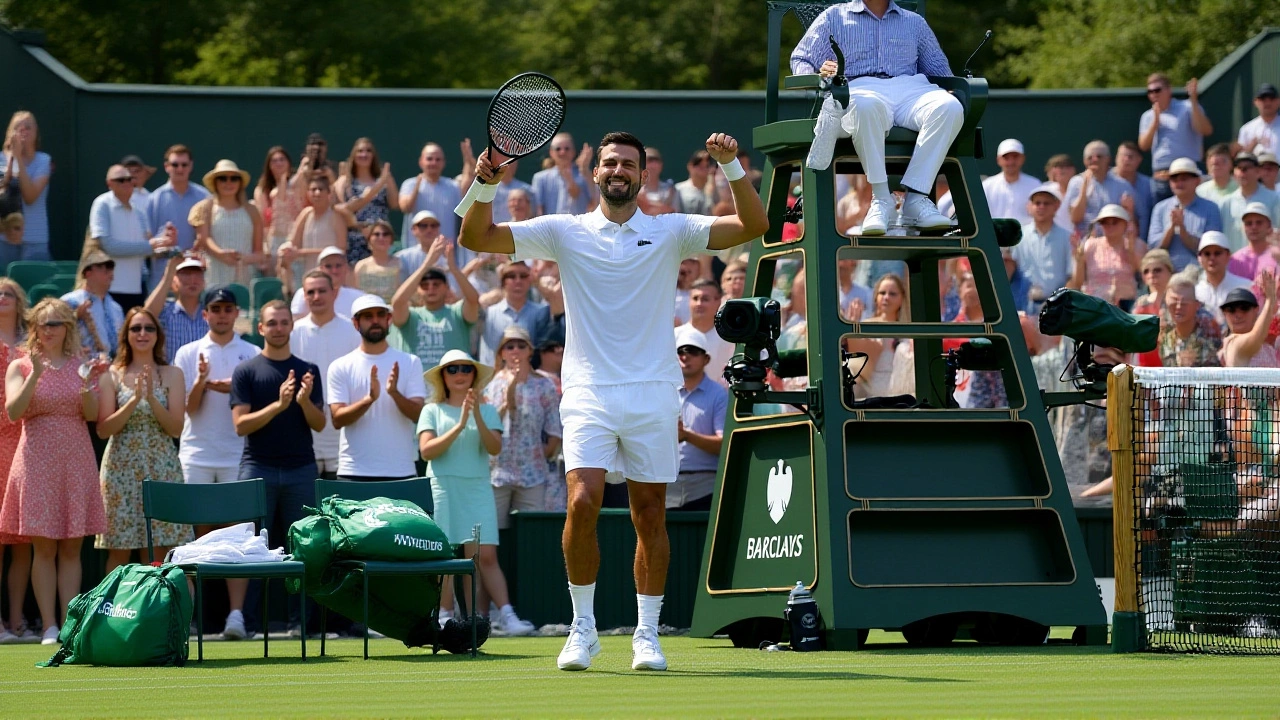Novak Djokovic Rules Out Retirement After US Open Loss to Alcaraz
 Oct, 7 2025
Oct, 7 2025
When Novak Djokovic, professional tennis player fell 6‑3, 6‑4 to Carlos Alcaraz, world No. 2, in the US Open semifinals on Friday, September 6, 2025, the tennis world braced for more than just a loss. The match took place at US Open 2025Flushing Meadows, New York, and after the final point Djokovic made it clear he isn’t packing his rackets anytime soon. “I’m asking myself questions more now than ever about how long I want to keep going at this level,” the 38‑year‑old told reporters, adding that his love for the sport remains fierce.
Semifinal Showdown and Immediate Reactions
The Spaniard’s aggressive baseline play proved too much for the Serbian on the day. Alcaraz blasted four aces in the first set and broke Djokovic twice, leaving the five‑time defending champion scrambling. In the post‑match press conference, Djokovic appeared calm but candid. “I still feel like I enjoy competing,” he said, “and I know I have game left in me to play at the highest level.” He also hinted that shorter‑format tournaments might suit his body better as he ages.
On the other side of the microphone, Alcaraz praised his opponent’s resilience. “Novak is a legend, and playing him pushes me to be better,” the 22‑year‑old remarked, a sentiment echoed by many analysts who see the match as a symbolic passing‑of‑the‑torch moment.
Djokovic’s Career at a Glance
Even in defeat, Djokovic’s 2025 season reads like a masterclass in longevity. He reached the semifinals of every Major this year – Australian Open, French Open, Wimbledon, and the US Open – a feat no player has managed in the Open Era. Yet the 24‑title haul remains stuck at the 2023 US Open, his most recent victory.
- Grand Slam titles: 24 (last in 2023)
- 2025 Major semifinals: 4 (no finals)
- Career wins over top‑10 players in 2025: 52
- Age: 38 years, 10 months
- Rank at US Open: World No. 7
What’s striking is how his schedule has shifted. Instead of the grueling 21‑match Grand Slam marathons, Djokovic has been selecting events that give him more recovery time, a strategy he confirmed when he said, “I do fancy my chance a bit more in best‑of‑3, like Masters 1000 weeks where there’s a day off between matches.”

The Younger Wave: Alcaraz, Sinner, and the Changing Guard
Since Djokovic’s last Grand Slam triumph, the men’s tour has been dominated by two rising stars: Jannik Sinner, the Italian prodigy, and Carlos Alcaraz. Between them they’ve claimed the last seven major titles, leaving the Serbian to chase a 25th. Both have a more powerful baseline game and excel in long, physical rallies – a contrast to Djokovic’s defensive wizardry.
“The physical demands of a five‑set match against these guys are huge,” Djokovic admitted. “I’m not a young man anymore, and my body tells me when it’s time to dial it back.” Yet his respect for the new generation is evident. “I love watching them push the sport forward. It keeps me motivated.”
Looking Ahead: Djokovic’s Plans and Tournament Prospects
When asked about next year’s schedule, Djokovic didn’t shy away from Grand Slams. “I still want to play a full Grand Slam season in 2026,” he said, emphasizing that the four majors are “the pillars of our sport.” He also hinted at a more selective approach to the ATP Tour, focusing on events that offer adequate rest.
Australian Open director Craig Tiley dropped a tantalizing detail during a separate interview: officials are already drawing up ideas for a “big” farewell ceremony when Djokovic finally decides to hang up his racket. “It would be premature to share them now, but we’re planning something special for Melbourne,” Tiley told reporters.
The Melbourne venue holds a special place in Djokovic’s heart. It was where he captured his first Grand Slam in 2008 and later added ten more titles. If a farewell does come, it will likely be at the Australian Open, reinforcing his deep connection to the tournament.

Historical Perspective: Farewells and Legacy
When legends like Roger Federer and Rafael Nadal announced their retirements, the tennis community rallied with heartfelt tributes, stadiums named after them, and charity matches. Djokovic’s career, however, spans a longer era of dominance – 24 slams, 373 weeks at world No. 1, and a record 37 Masters 1000 titles.
Experts say his legacy will be judged not only on trophies but on his impact on the sport’s mental and physical conditioning standards. “Novak changed the way players think about nutrition, recovery, and mental resilience,” noted Dr. Maria Sharapova, a sports psychologist who has worked with top athletes for the past decade.
The inevitable question remains: how much longer will he stay at the top? Only time will tell, but for now, Djokovic appears intent on writing a few more chapters, even if they’re shorter and more strategically chosen.
Frequently Asked Questions
How does Djokovic’s decision to keep playing affect upcoming Grand Slam fields?
Djokovic’s presence ensures that the men’s draw remains ultra‑competitive. His experience forces younger players to raise their game, and his potential match‑ups with Alcaraz or Sinner add marquee value that boosts viewership and ticket sales for all four majors.
What are the key differences between Djokovic’s schedule now and during his prime?
During his peak years, Djokovic entered nearly every ATP event, often playing back‑to‑back weeks. Today he’s prioritising Grand Slams, selective Masters 1000 tournaments, and events with built‑in rest days, aiming to preserve his body for high‑intensity matches.
Will the planned Australian Open farewell ceremony happen soon?
According to director Craig Tiley, planning is underway but no timeline has been set. The ceremony will likely be timed with Djokovic’s eventual retirement, which could be as early as next season or a few years down the line.
How have fans responded to Djokovic’s recent performances?
Supporters have praised his tenacity, noting the surge in social‑media applause after each semifinal run. Ticket sales for his matches remain strong, and many fans say his humility and willingness to adapt endear him to a new generation.
What does Djokovic’s focus on best‑of‑3 formats mean for his ranking?
Winning more Masters 1000 events, which use best‑of‑3 sets, could help him gather valuable points and maintain a top‑10 ranking, even if Grand Slam titles stay elusive for now.